Qualcomm Snapdragon 805 Performance Preview
by Anand Lal Shimpi on May 21, 2014 8:00 PM EST- Posted in
- Tablets
- Snapdragon
- Qualcomm
- Mobile
- SoCs
- Snapdragon 805
GPU Performance
3DMark
Although it's our first GPU test, 3DMark doesn't do much to show Adreno 420 in a good light. 3DMark isn't the most GPU intensive test we have, but here we see marginal increases over Snapdragon 800/Adreno 330. I would be interested in seeing if there are any improvements on the power consumption front since performance doesn't really change.
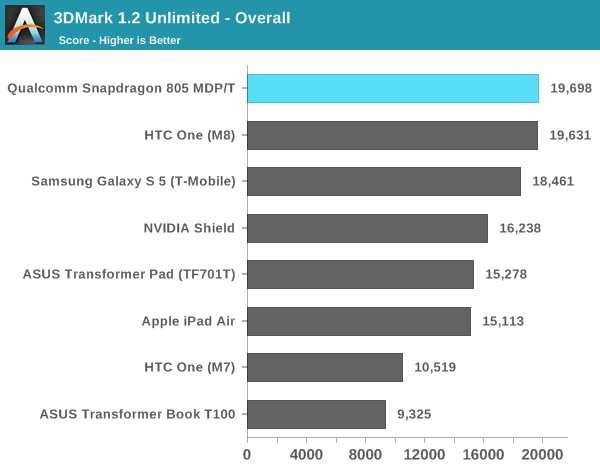


Basemark X 1.1
Basemark X 1.1 starts to show a difference between Adreno 420 and 330. At medium quality settings we see a 25% increase in performance over the Snapdragon 801 based Adreno 330 devices. Move to higher quality settings and the performance advantage increases to over 50%. Here even NVIDIA's Shield with Tegra 4 cooled by a fan can't outperform the Adreno 420 GPU.
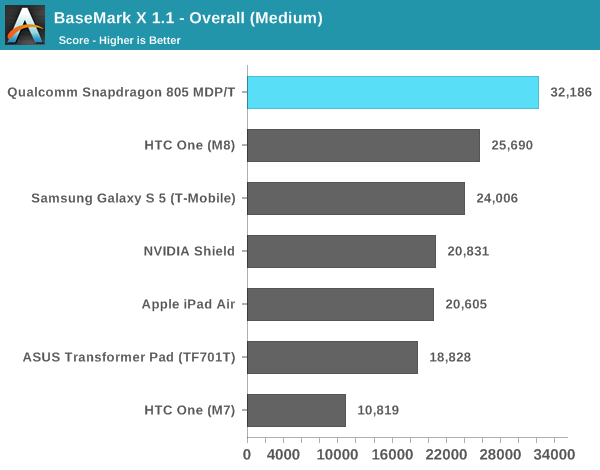
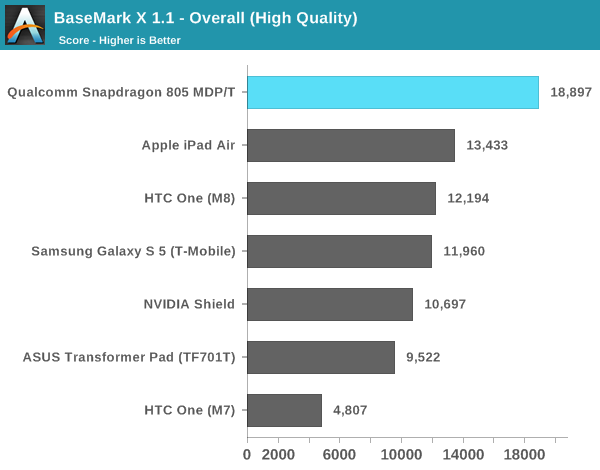
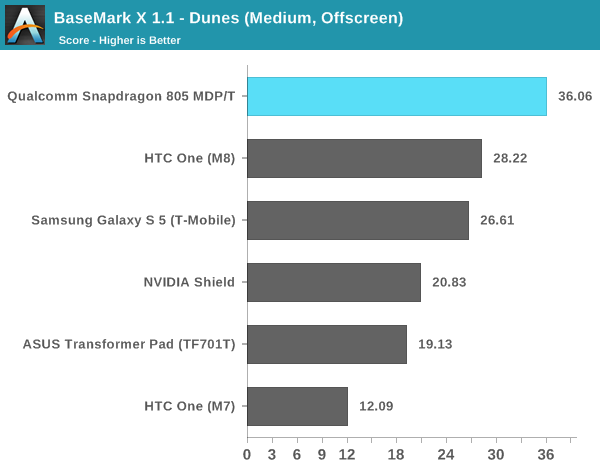
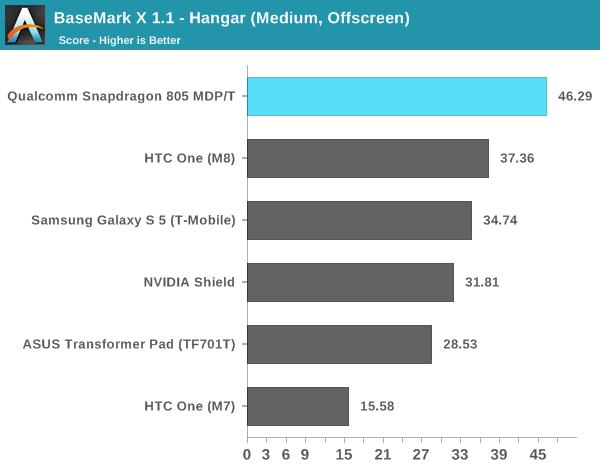


GFXBench 3.0
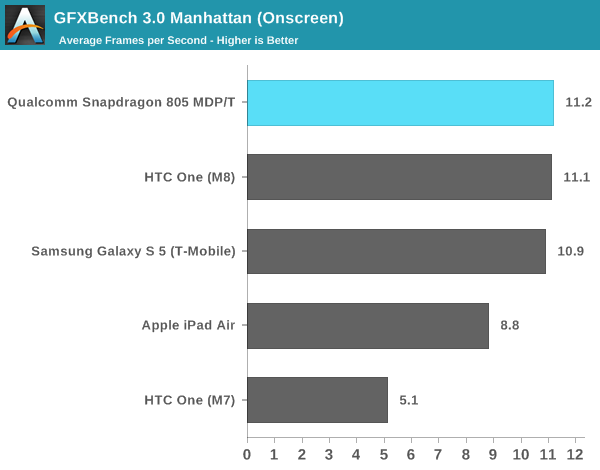
Manhattan continues to be a very stressful test but the onscreen results are pretty interesting. Adreno 420 can drive a 2560 x 1440 display at the same frame rate that Adreno 330 could drive a 1080p display.
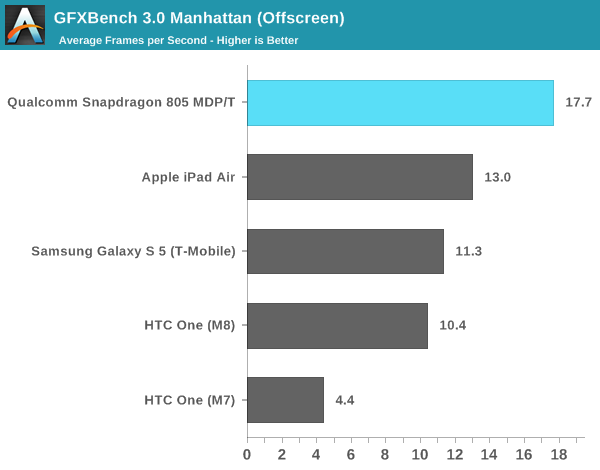
In an apples to apples comparison at the same resolution, Adreno 430 is over 50% faster than Adreno 330. It's also faster than the PowerVR G6430 in the iPad Air.
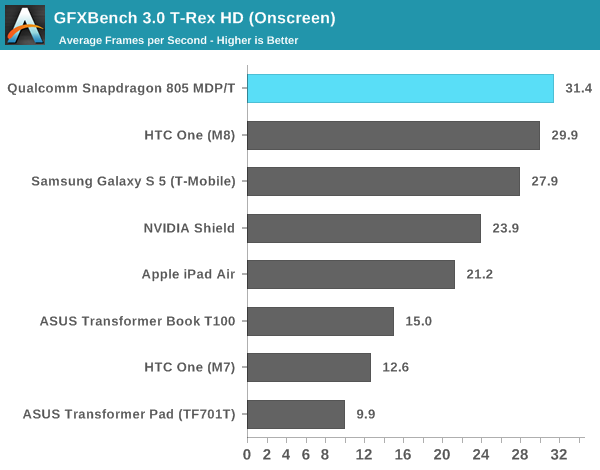
Once again we see an example where Adreno 420 is able to drive the MDP/T's panel at 2560 x 1440 at the same performance as Adreno 330 can deliver at 1080p
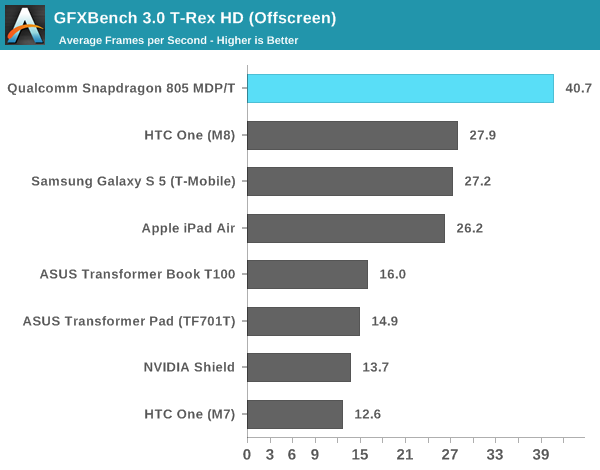
At 1080p, the Adreno 420/S805 advantage grows to 45%.
I've included all of the low level GFXBench tests below if you're interested in digging any deeper. It's interesting that we don't see a big increase in the ALU test but far larger increases in the alpha blending and fill rate tests.
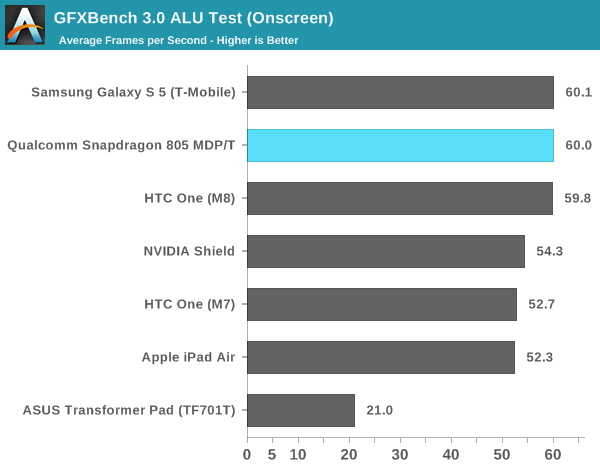
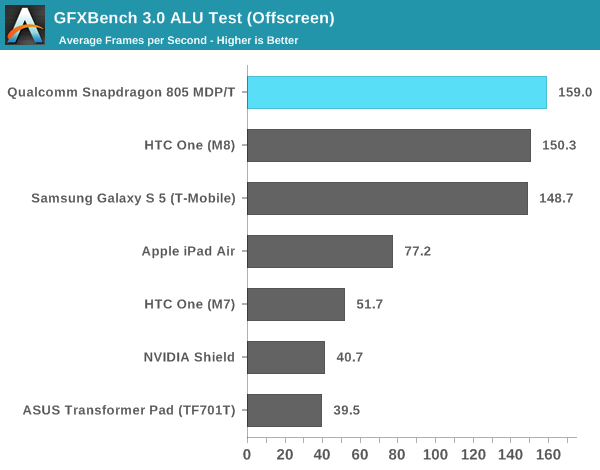
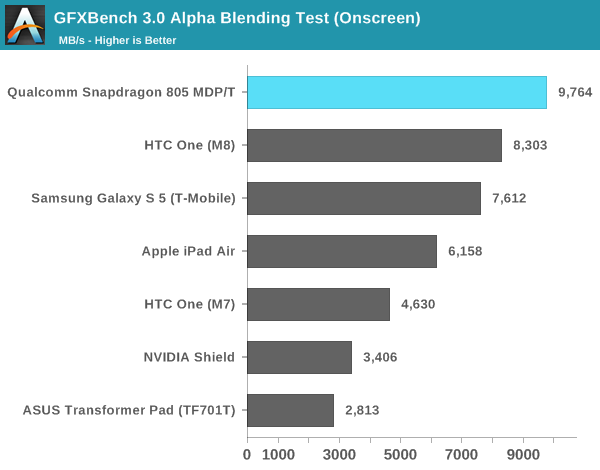

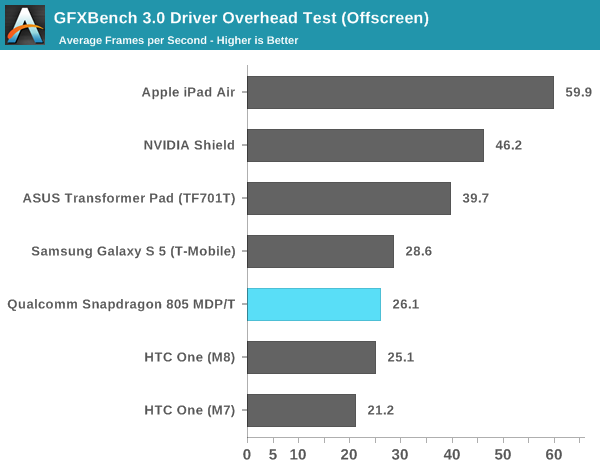
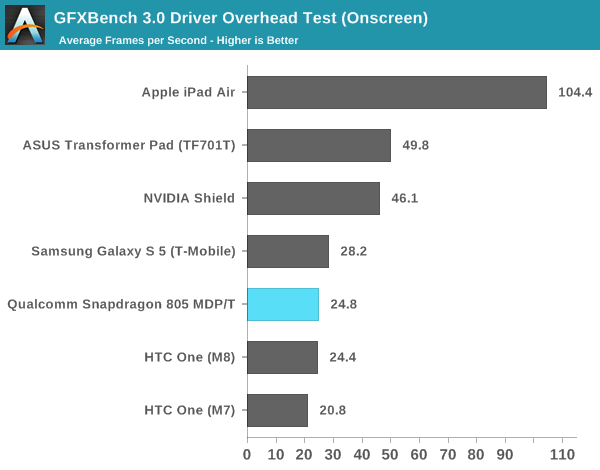
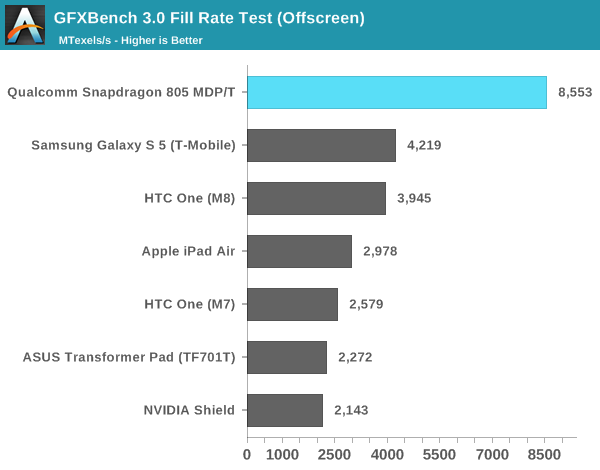
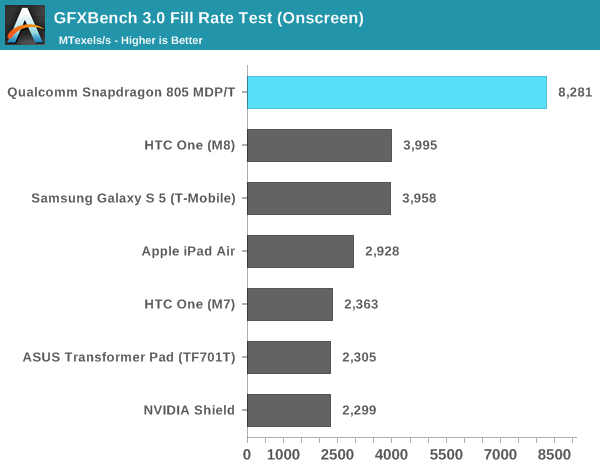










149 Comments
View All Comments
testbug00 - Thursday, May 22, 2014 - link
Yeah, it supports DX11.2.... no other mobile GPU supports... Wait. Qualcomm does... And I wonder how long until ARM "stock" GPU does... And Imagine Tech's...Nvidia is not displacing Qualcomm most likely. It could happen, but, given OEM relationships, it is unlikely. Even if NVidia has a better product (note: I think they have one that is on best even with Qualcomm (for Phones)) the OEM relations mean a lot. ATI managed to make quite a bit of money despite NVidia having far better products due to OEM relationships.
kron123456789 - Thursday, May 22, 2014 - link
"Yeah, it supports DX11.2.... no other mobile GPU supports... Wait. Qualcomm does... And I wonder how long until ARM "stock" GPU does... And Imagine Tech's..." — Only Tegra K1 supports OpenGL 4.4. DirectX support matters ONLY on Windows. And Tegra K1 supports DirectX 12(because of that: http://blogs.nvidia.com/blog/2014/03/20/directx-12... ).tuxRoller - Friday, May 23, 2014 - link
Why does opengl 4.4 matter? Who would consume it?http://richg42.blogspot.com/2014/05/the-truth-on-o...
fivefeet8 - Friday, May 23, 2014 - link
Unfortunately, OpenGL 4.x will mean little to Android devices until Qualcomm starts actually caring about the API in their drivers. If the K1 actually competes in tablets and superphones, it may actually have the effect of forcing them to through competition.https://dolphin-emu.org/blog/2013/09/26/dolphin-em...
tuxRoller - Friday, May 23, 2014 - link
Look, you don't need to keep linking to that old post. I'm don't need to argue about adreno blob quality. Nvidia, however, lives and breathes on it software, which seems to be not quite as flawless as some would believe.Again, why does gl matter to android? It doesn't even support it. The point of having the embedded profile is to expose enough of gl to create a good balance between high performance/graphics quality and efficiency. Going full blown gl destroys that last advantage (tesselation alone is terrible for battery life).
kron123456789 - Friday, May 23, 2014 - link
Serious Sam 3 for Tegra K1 is using OpenGL 4(and Croteam have Android build that supports OpenGL 4).tuxRoller - Friday, May 23, 2014 - link
Great, but you aren't going to see Google including gl in their builds. The reason? Gles is the best of what can be supported while maintaining decent battery.fivefeet8 - Thursday, May 22, 2014 - link
Hardware level support for API's mean diddly squat if their drivers are crap. My Galaxy S4 with the Snapdragon 600 supports OpenGLes3, but it sucks at it. Nvidia actually has a history of nominal OpenGL support in drivers at least.ams23 - Thursday, May 22, 2014 - link
Who said anything about NVIDIA "displacing" Qualcomm? That is pure silliness. NVIDIA offers a "differentiated" product. Any OEM who wants to offer differentiated high end products may consider using Tegra K1. K1 is also a very versatile product, so it will be used in a wide variety of different products.ams23 - Thursday, May 22, 2014 - link
Companies like Xiaomi that are looking for differentiated products would absolutely consider using Tegra K1 in a high end smartphone. Considering the performance and perf. per watt advantages for Tegra K1, there are clearly compelling reasons to use it. But again, like I said above, the lions share of phones outside of Apple and Samsung will go to Qualcomm (bundled modem) and Mediatek (lowest cost).